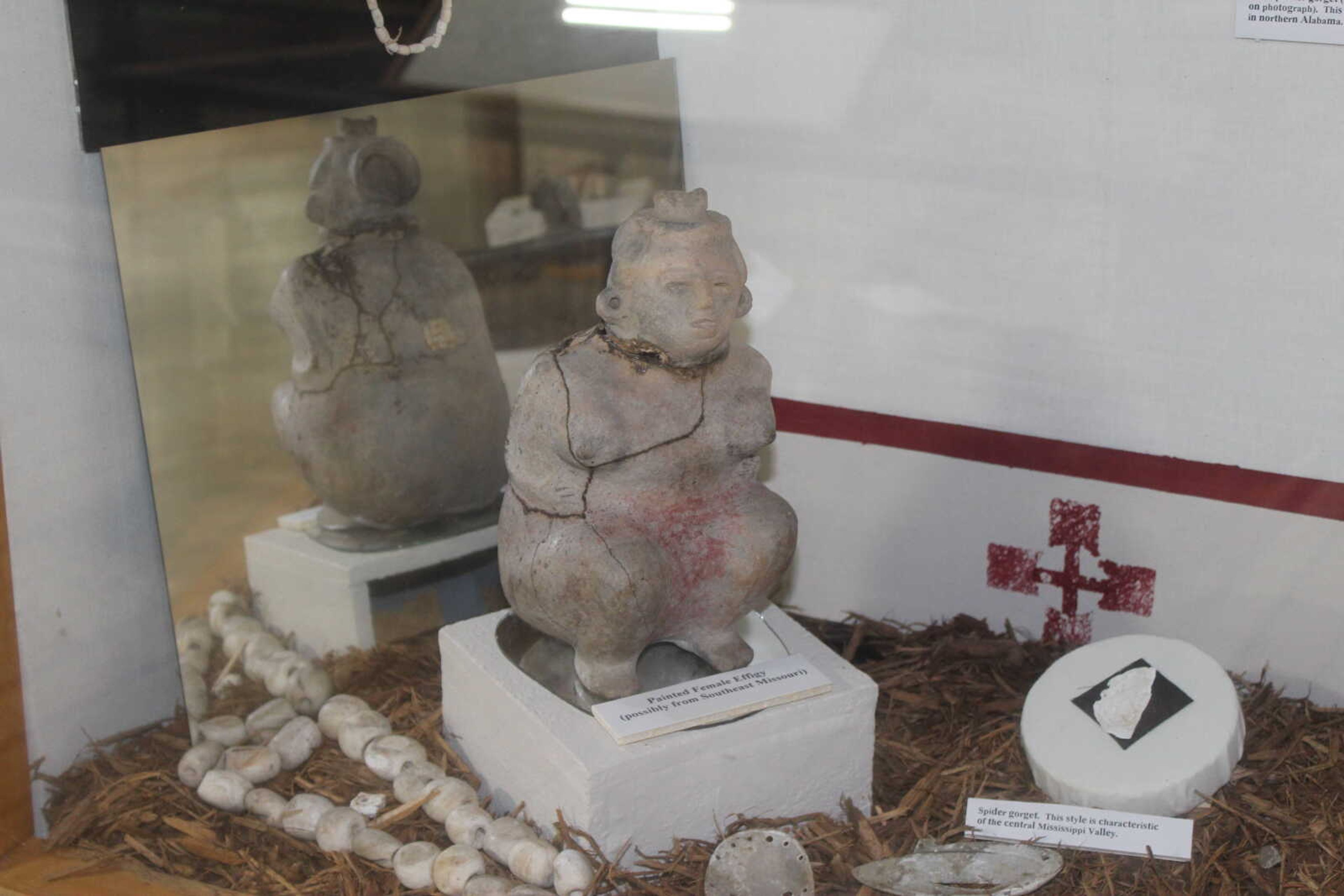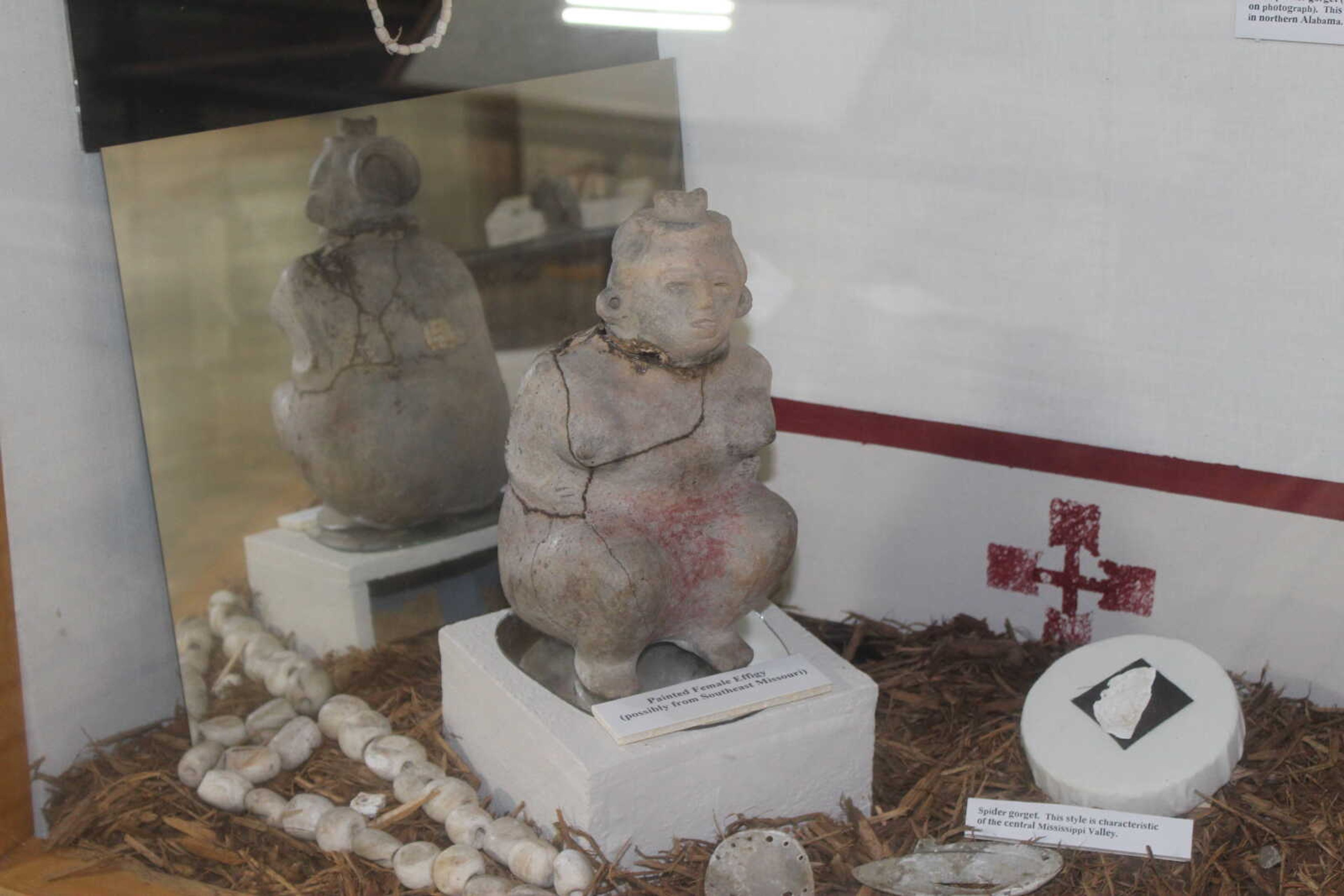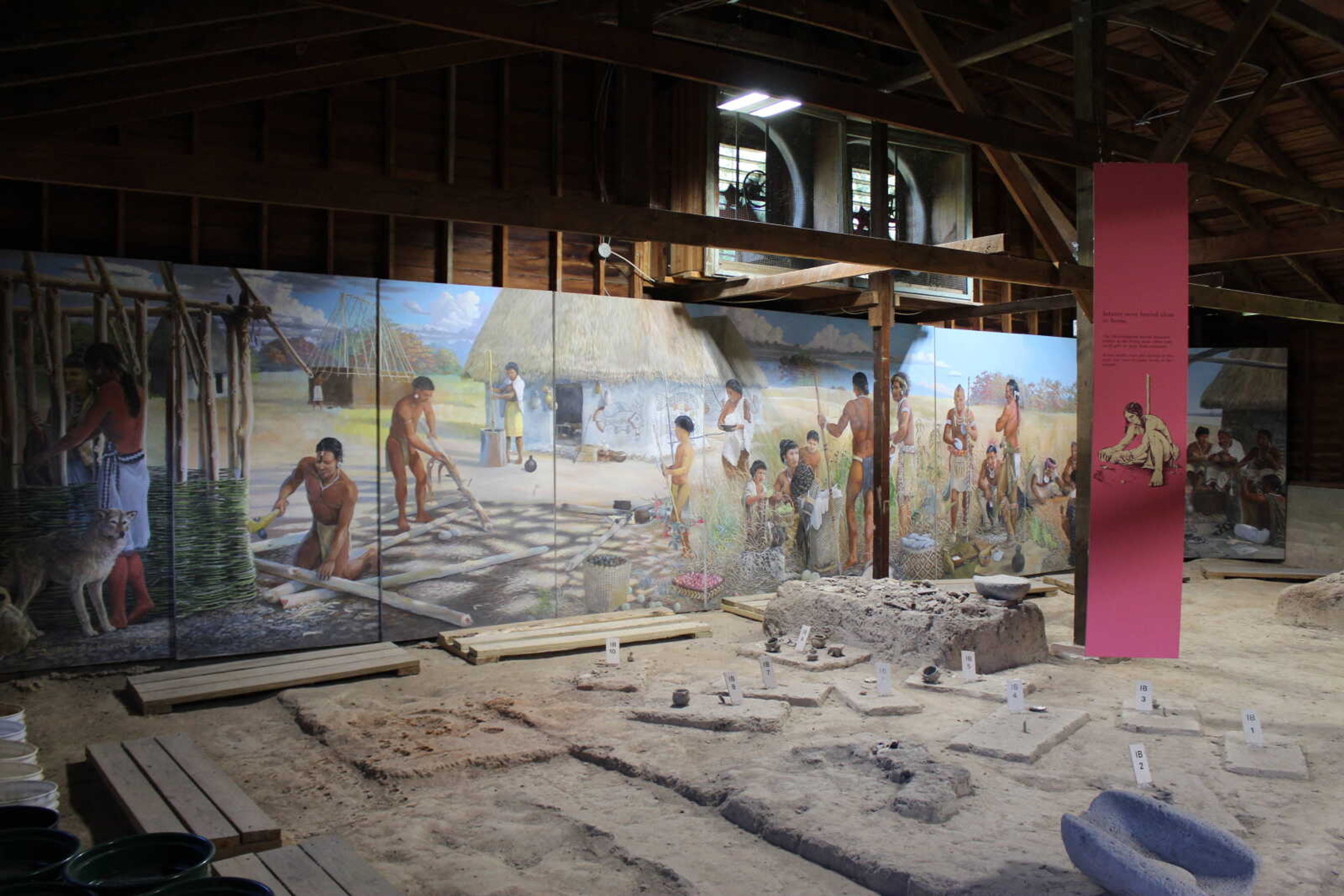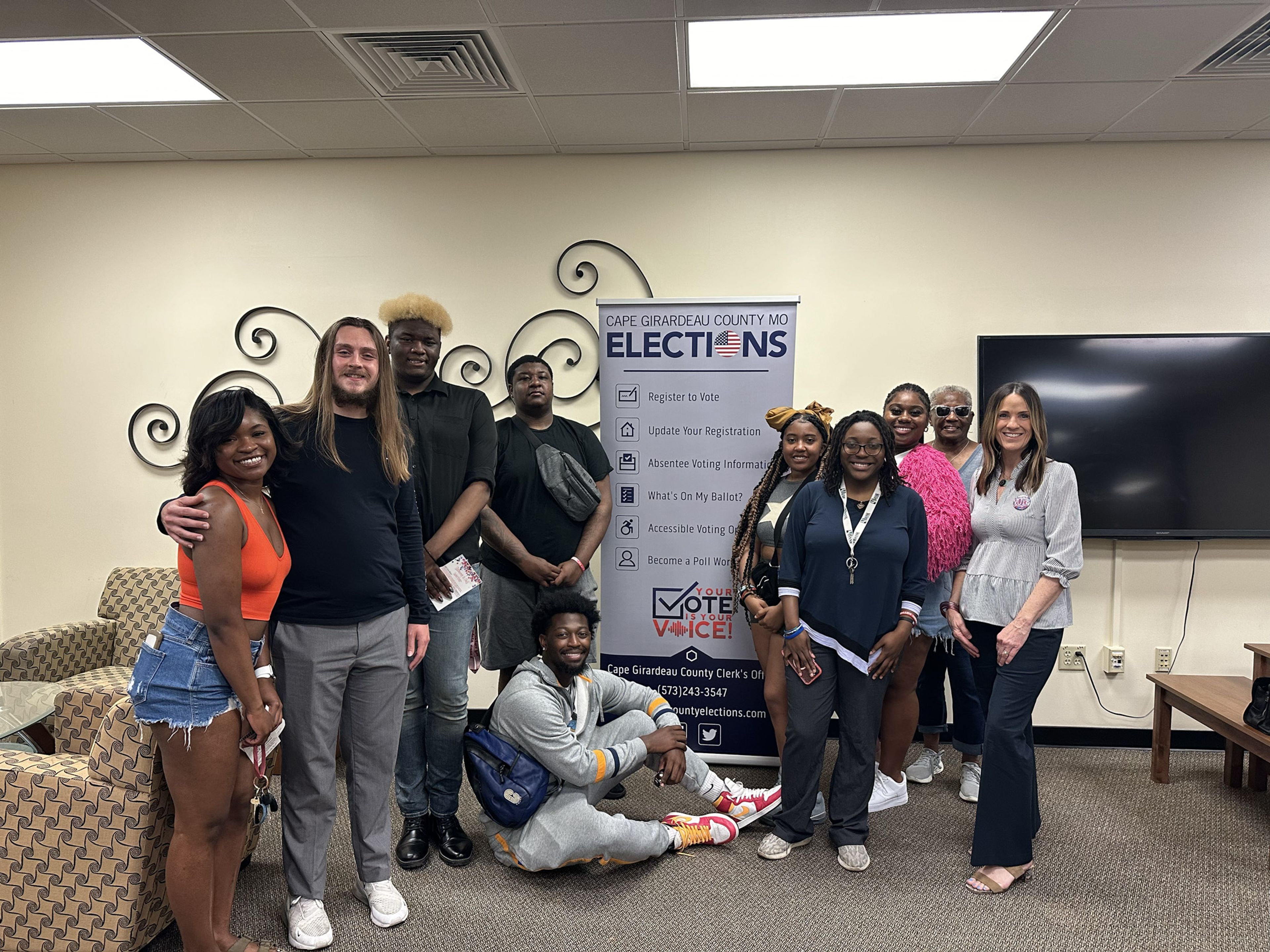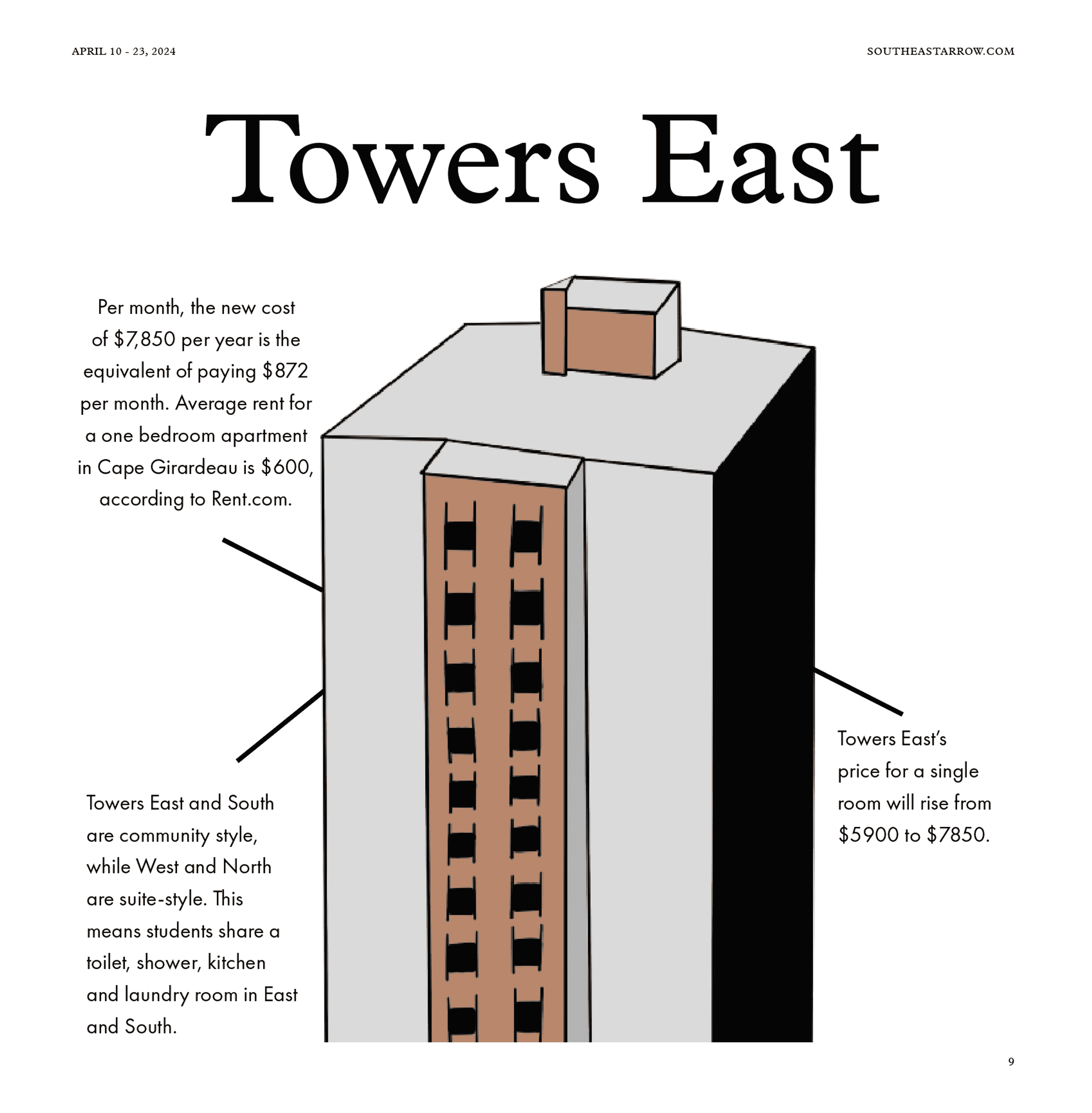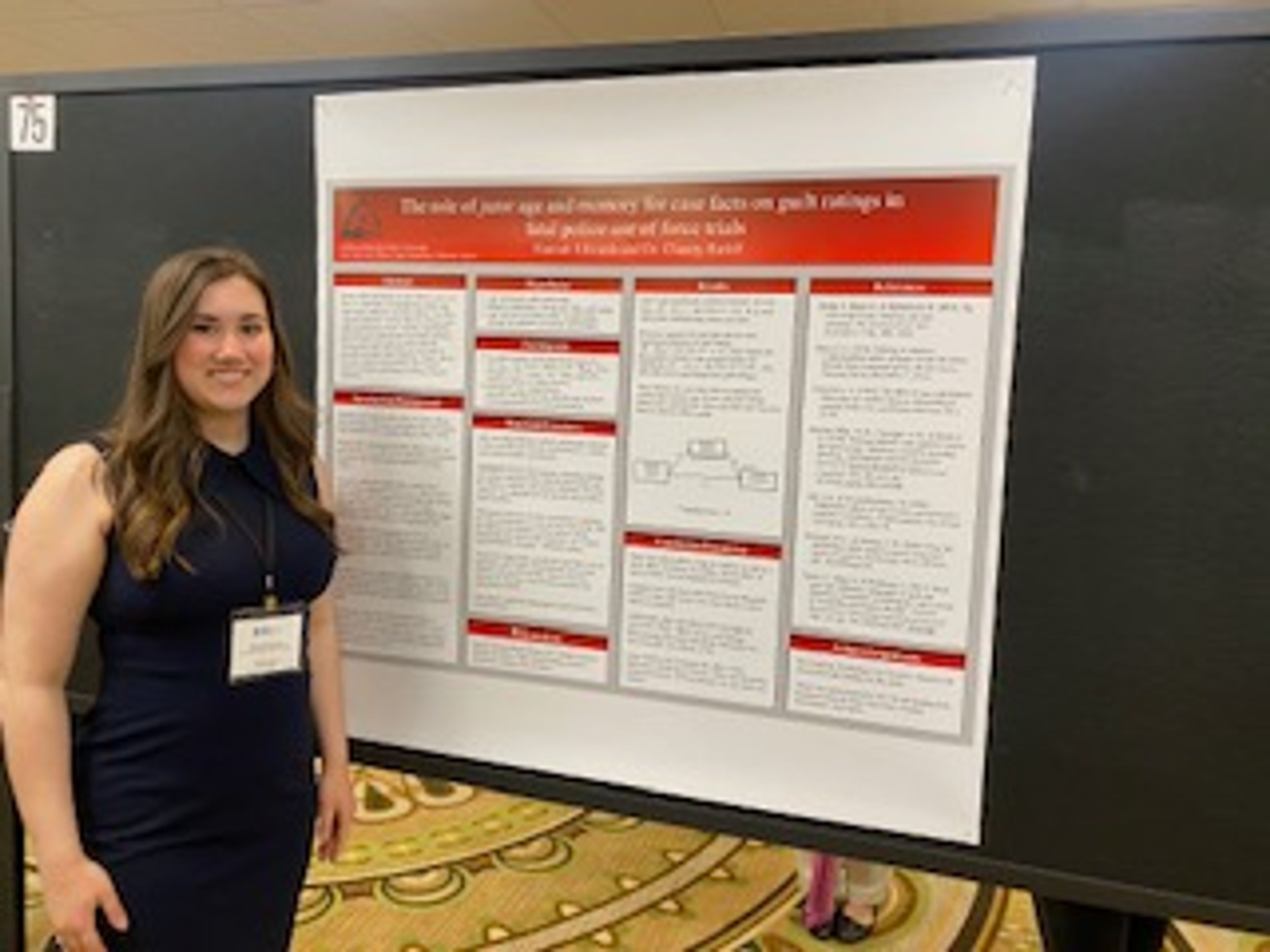One-thousand years ago, a politically powerful priest stood atop a 100-foot tall terraced temple, overlooking a large, culturally sophisticated city. This wasn’t in far off Mexico or Mesopotamia, but right here, in the Mississippi Valley.
Mississippian culture existed along the Mississippi river and its many tributaries.
According to the senior curator of SEMO’s Crisp Museum, Jim Phillips, the culture spread by establishing communities roughly 15 miles apart from each other.
“There would be several villages about 13 to 15 miles out, then 13 miles from that another center, and then you may have another city with a mound building and a few more hamlets of farmers,” Phillips said.
The mound building Phillips mentioned were massive earthen structures designed to elevate important locations and people.
The National Park Service described the mounds as “Flat-topped pyramidal structures” that supported wooden buildings for temples, houses, and commercial uses.
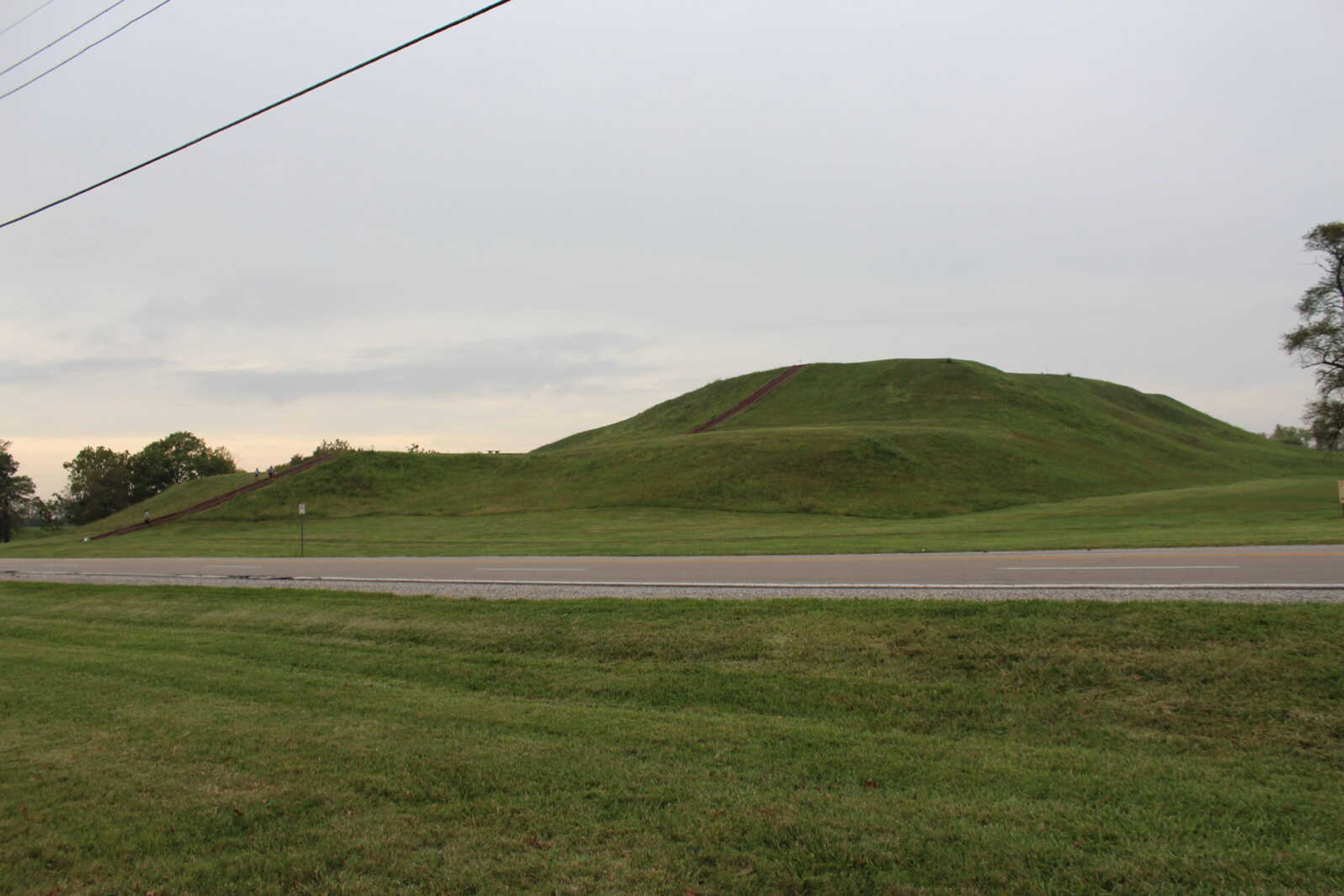
Most of these mounds were large, but one location stands far above the rest.
Monks Mound at the Cahokia site in Collinsville, Illinois, towers over the other impressively tall mounds surrounding it. The Cahokia Mounds State Historic Site plaque at the base of the mound labels Monks Mound as the largest prehistoric earthwork in the Americas.
The mound is 100 feet tall and covers 14 acres with 22 million cubic feet of material. It was built entirely by hand.
“Cahokia is believed to be the center of Mississippian society,” Phillips said.
The park’s official website states the city had an estimated population larger than London in CE 1250. The city was spread across 104 mounds and surrounded by a defensive wall known as a palisade.
The Mississippians, whose actual name and language has been lost to time, thrived on agriculture and a society based upon reciprocity.
“This big city state is feeding off the commoners on the basis that they can then redistribute back out each year. It’s a kind of reciprocity where you give to me and I’ll give back to you my allegiance and loyalty,” Phillips said.
The Cahokia Mounds State Historic Site is open year-round and free to visit. An augmented reality tour that reconstructs the site as it would have been is also available at the site.
Cahokia was established as a UNESCO World Heritage Site in 1982. The Illinois Historic Preservation Agency maintains the location’s historic integrity.
It hasn’t always been so well preserved, however. Some mounds, such as Mound 51, were dismantled and sold for landfill before the site was appreciated for its cultural importance.
Another Mississippian site located southwest of SEMO in Wickliffe, Kentucky, embodies the relationship between archeology and ancient Native American history.
The Wickliffe mounds, known today as Wickliffe Mounds State Historic Site, were purchased by logger and amateur archeologist Fain King in the 1930s. The mounds initially drew King's attention after artifacts were revealed when mounds were removed during the construction of US Highway 51 in 1932.
The site became known as the “Ancient Buried City” and featured the excavation and display of the Cemetery Mound. During the early years of the excavation, the cemetery mound was removed, revealing the many Mississippian bodies below.
The remains, unearthed, were turned into an attraction for tourists to view.
Once the King family passed away, the property was turned over to the Western Baptist Hospital in Paducah, Kentucky.
“The hospital looked for ways to liquidate the property and actually looked at the idea of doing apartments,” Phillips said. “But they finally, after some local uproar, donated the property to Murray State University.”
The turning point for Native Americans and archeology came in 1990 with the passage of the Native American Graves Protection and Repatriation Act (NAGPRA). The act mandated that indigenous remains and artifacts be treated with dignity and respect.
The human remains were finally reburied in 2011. The museum at Wickliffe emphasizes the importance of cooperation and oversight by the Chickasaw Nation during this process.
Wickliffe Mounds State Historic Site is open year-round and offers a museum, trails, and an interpretive center.
Dozens of Mississippian sites have been discovered throughout the Mississippi Valley. Many are close to home for SEMO students.
History and anthropology professor Jennifer Bengtson is an expert on Mississippian culture and works with students at an undisclosed location in Cape Girardeau County.
“Students get experience with archeology, field work with processing artifacts, bringing them into the lab, cleaning, sorting, and preparing them for long term curation,” Bengtson said.
Bengtson and the university are using new techniques, allowing nondestructive exploration of the delicate mounds. SEMO uses a technique that allows for the site to be mapped without disturbing the ground.
There are times when no other option is available, though.
“If there are ways to preserve rather than excavate then we lean towards that, but that’s not always possible because of development, agriculture, companies, or the government,” Bengtson said.
“They’re going to build something or do something no matter what and so we have to get in there and gather what information we can before it’s gone forever.”
The Chickasaw Nation, one of the many descendants of the Mississippians, states on their official website they do not “Promote or consent to excavation of these sacred sites.”
They do not control most of their ancestral sites due to the Indian Removal Act of 1830.
“There’s no way we can erase or undo the harm that we’ve done in the past, but there are certainly ways that we can do better going forward. And it’s incumbent on non-native archeologists to consider indigenous perspectives,” Bengtson said. “It’s time for us to listen to them.”
SEMO’s Crisp Museum features a large collection of Mississippian pottery and other artifacts from Pre-Columbian history. The museum is free for SEMO students.
